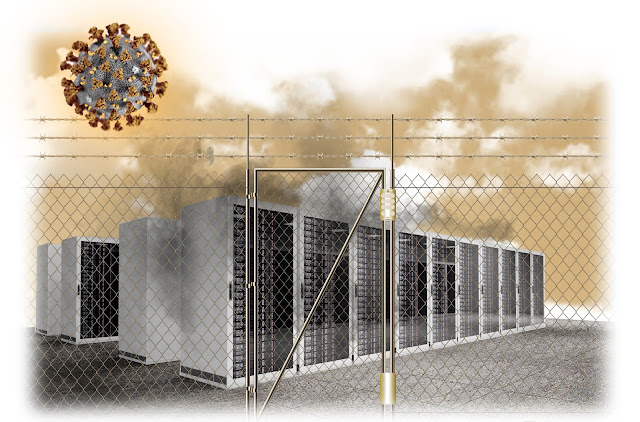Building an Industry
We are in an exciting time. It is not every day that you get to be on the forefront of a fledgling industry as it is being built brick-by-brick into what will most likely become the industry that dominates the 21st century. As was the case a century ago with the automotive industry, which dominated the landscape of economic growth and development for many countries worldwide, the data center industry was born of major advancements in technology and is poised to rule the economic landscape for the foreseeable future. Data Centers as an industry are in their infancy, and it has largely been up to the vendors and manufacturers to dictate what is “best” for the industry up to this point, however historically that usually only means what is best for their bottom line. We live in a “wild-west” of patchwork standards and best-practice documents that pertain to only small segments of our industry. There has yet to be a codified means of end-to-end design of a data center to be inclusive of the product which it is meant to serve. The IDCA means to change that with The Infinity Paradigm™ [1].
Infinity simultaneously evokes a sense of limitless potential and possibility, and all the while ensuring that continuous improvement is also on the forefront of thought. The Infinity Paradigm™ aims to capture that essence and apply it to standardizing the Data Center industry to ensure a robust and healthy industry is here for our ever-growing data needs. According to a recent Cisco study, global internet traffic is expected to increase nearly 3-fold by 2020 to over 2.3 Zetabytes of traffic per year.[2] With this growth in user demand will undoubtedly come growth in data center use, and it is our mission to ensure that our industry grows in a sensible, sustainable, and practical manner. By creating an all-encompassing set of standards to codify this growth, the IDCA has presented our industry with an incredible opportunity to adopt platform that will guide us all into a bright and prosperous future.
There are many standards in existence that touch on certain portions and aspects of the data center industry, however none of them are as all-encompassing and holistically focused as what is needed to ensure a sustainable future for all aspects of the industry. Some, like ITIL[3], cover the administrative side of things while others, such as The Green Grid[4] or The Uptime Institute[5], are more focused on the operations and design of the physical building and associated infrastructure. There are IT standards bodies like PCI[6], ISO[7], and IEEE[8] that focus on the technology systems and how to interconnect them. These standards bodies all play a major role in keeping our industry on track, however as you can see, they are all narrow focused on one particular segment. While being focused allows for them to continue to develop and evolve their core segment, if we are not working together toward a common end-goal, it will be difficult to ensure a lasting future for our industry.
The Infinity Paradigm™ is built to encompass all of those aspects, and not to replace the existing standards bodies, but to augment their place in the data center industry by providing the glue that brings them all together into a unified set of standards for our industry as a whole. There are Seven Layers within the Application Ecosystem™ as define din the Infinity Paradigm™ and we start the entire standard by acknowledging the reason we are even having this conversation today, at the Application Layer™. It is the IDCA’s belief that Data Centers do not exist without a purpose, and that purpose is to deliver an application to its end-users, whether that be an enterprise application delivered to employees, or a website being served to the users of the public internet. Continuing down from the peak of the pyramid, you have a Platform Layer™ which is the business model for which the application is delivered, which can be comprised of many “as-a-service” offerings or other internally developed delivery models. Next you encounter the Compute Layer™ which is describing the system architecture and resource allocation models that are being employed to deliver an application and can encompass physical hardware, virtual systems, and cloud architectures. As we move down the pyramid one layer into the IT Infrastructure Layer™, we start to encounter the tangible assets that are recognizable as switches, servers, and storage devices, etc. Next is the Site Facility Infrastructure Layer™ where the systems that make up the electrical and mechanical delivery as well as the IT cabling infrastructure that is used to interconnect the IT systems. The Site Layer™ comes next, and while it may seem like that was covered in the previous layer, there are many factors like geographic and political stability, climate, or access to local resources that are not encompassed by the facility infrastructure alone, so the Site in itself must be considered as its own function within the Application Ecosystem. Rounding out the base of our pyramid is the Topology layer, where an organization’s data center sites, or nodes, are configured for interconnectivity and availability targets are defined, which all factor in to the overall resiliency of the application itself.
The time has come for our industry to establish a set of standards to build around. We need rules and guidelines to be established which we can benchmark against to ensure our industry is built upon sound practices. We need the IDCA.
To learn more and continue the conversation of keeping the data center industry on a path to a bright and prosperous future, you can download the AE360 document from IDCA here: http://idc-a.org/ae360







Comments
Post a Comment